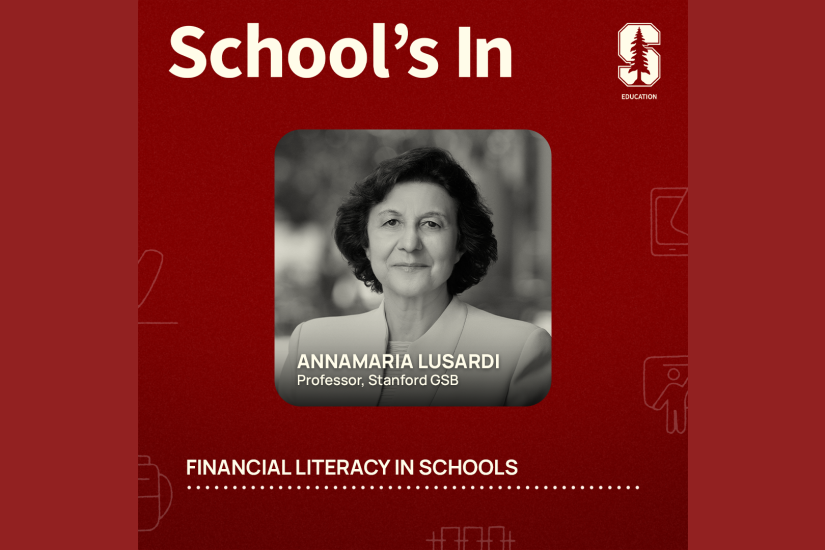
Stanford researcher asks: What is a summer job worth?
Low school attendance rates and school dropout in many urban high schools present serious hurdles for policy efforts to close the academic achievement gap that exists along socio-economic and racial lines. At the same time, policymakers and researchers are paying increased attention to how students’ experiences when school is out of session, especially during the summer, influence educational success.
Recent work by Jacob Leos-Urbel, associate director the John W. Gardner Center for Youth and Their Communities at the Stanford Graduate School of Education, provides new evidence regarding the impact of large-scale summer youth employment programs on high school students’ school attendance and academic achievement in the following school year.
Many cities across the country, including throughout California, offer publicly-funded summer youth employment programs. Although not explicitly focused on bolstering school attendance or academic success, summer youth employment may lead to improvements in school attendance and other educational outcomes.
Beyond increasing financial well-being, employment may foster non-cognitive skills such as responsibility, positive work habits, motivation, time management, determination, and self-confidence. Summer employment may also benefit youth by keeping them engaged in positive supervised activities when school is out of session, and is considerably less likely to detract time from educational pursuits compared to work during the school year.
Little prior research has examined the impact of work during the summer on students’ educational outcomes. Leos-Urbel estimates the impact of summer work experiences on high school students’ attendance and educational outcomes in the following school year using data from New York City’s Summer Youth Employment Program (SYEP).
Due to high demand for jobs through SYEP, the city uses a lottery system in an effort to equitably allocate program slots. This lottery system effectively assigns the offer to participate or not participate in SYEP at random, creating a control group of youth who apply to SYEP but are not chosen, which allows for causal estimates of the relationship between summer jobs and academic success.
The study uses SYEP data for 36,550 program applicants in 2007 matched to education files from the New York City Department of Education. The primary outcome of interest is school attendance in the school year following application to SYEP. Additional analyses examine statewide high school math and English exams attempted and passed, and scores on these exams.
The author finds that overall SYEP has a positive impact on school attendance of 1 to 2 percent on average, or roughly 2-3 days. Increases are larger for students who may be at greater educational risk; those age 16 or older who did not attend school at high rates in the prior school year. For these students, the average increase in attendance is approximately 3 percent, or 4-5 additional school days attended. In addition, for this group SYEP increases the probability of attempting and passing English and math statewide (Regents) exams, although there is no significant effect on test scores. The increased probability of passing appears to be due to the increased probability of attempting the exams rather than improved test performance.
Research on summer jobs programs is especially salient in the current economic climate, in which the availability of summer employment for teens has decreased considerably and public funding for summer jobs has waxed and waned. For example, the 2009 American Recovery and Reinvestment Act provided an influx of funding for summer jobs for low-income youth but was only temporary.
This study is one of the first to provide causal estimates of the effect of a large-scale summer youth employment program on students’ academic outcomes. The findings suggest that, although not explicitly focused on improving educational outcomes, summer youth employment programs may be an important tool amid policy efforts to address the problem of low school attendance.
This article was originally posted on the PACE blog: http://www.edpolicyinca.org/blog/what-summer-job-worth-impact-summer-youth-employment-academic-outcomes#sthash.kXmZU59m.dpuf
Policy Analysis for California Education (PACE) is an independent, non-partisan research center based at Stanford University, the University of California – Berkeley, the University of Southern California, and the University of California – Davis.
More resources:
The full study can be found in Leos-Urbel, J. (2014). “What is a Summer Job Worth? The Causal Impact of Summer Youth Employment on Academic Outcomes: Evidence from a Large-Scale Lottery,” Journal of Policy Analysis and Management, Volume 33, Issue 4, pages 891-991, Fall 2014.
For more on the Gardner Center: http://gardnercenter.stanford.edu/



